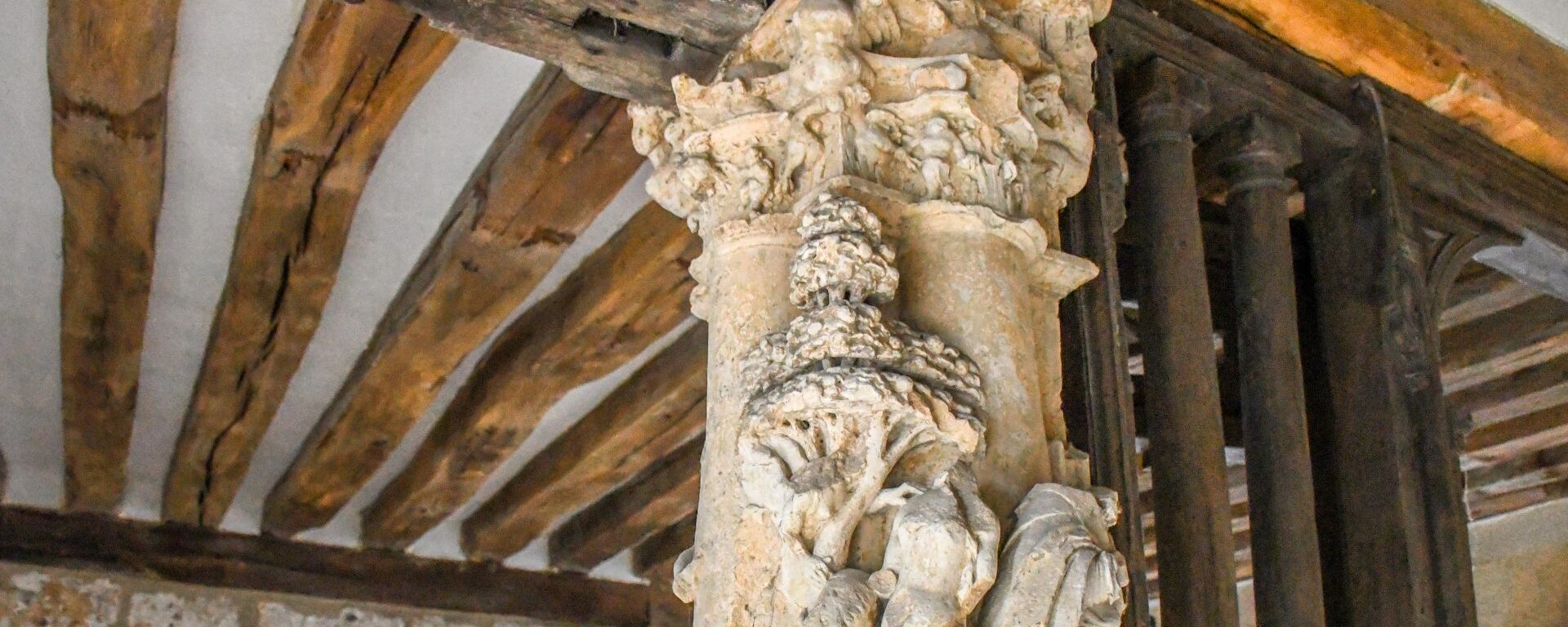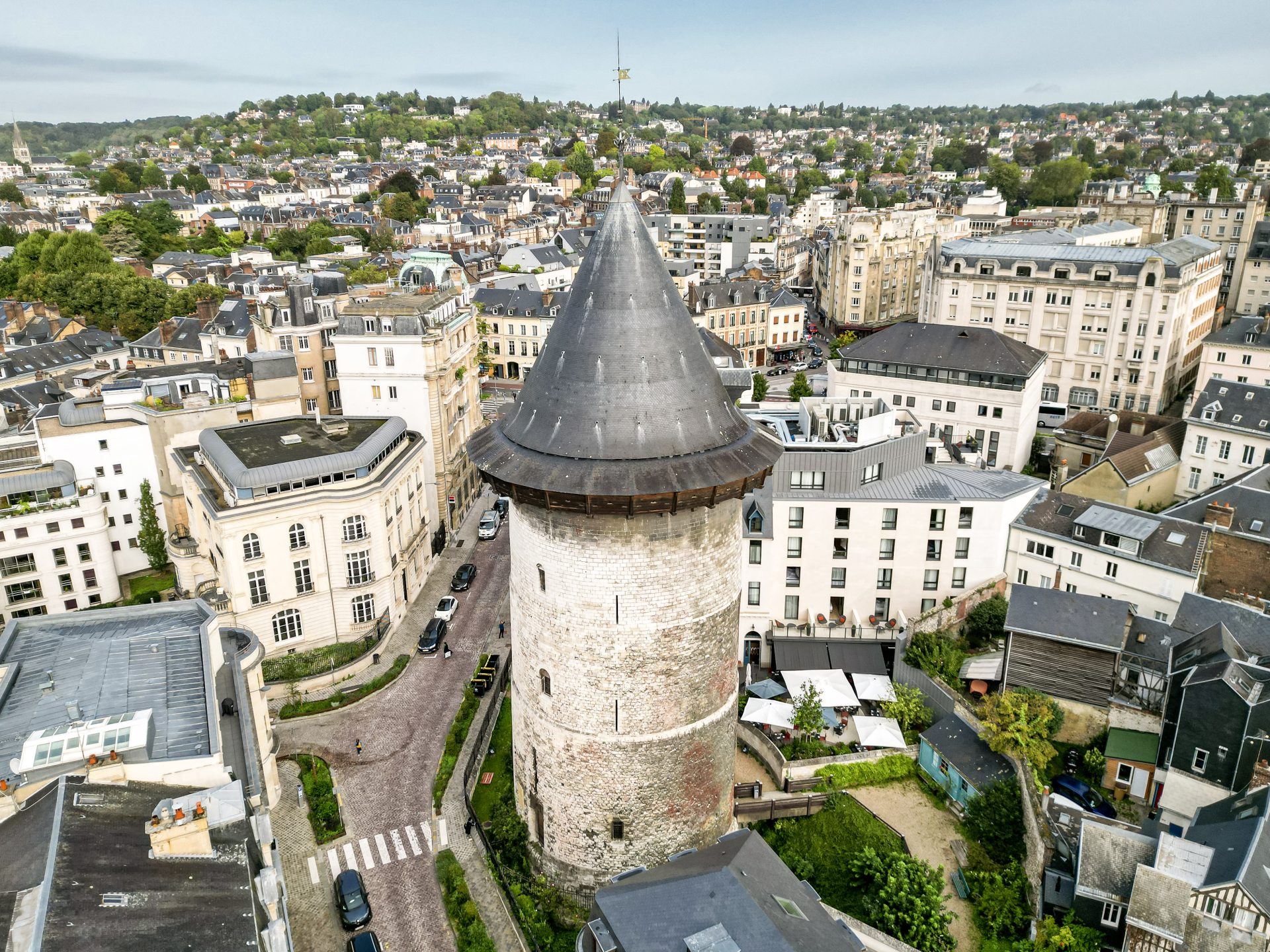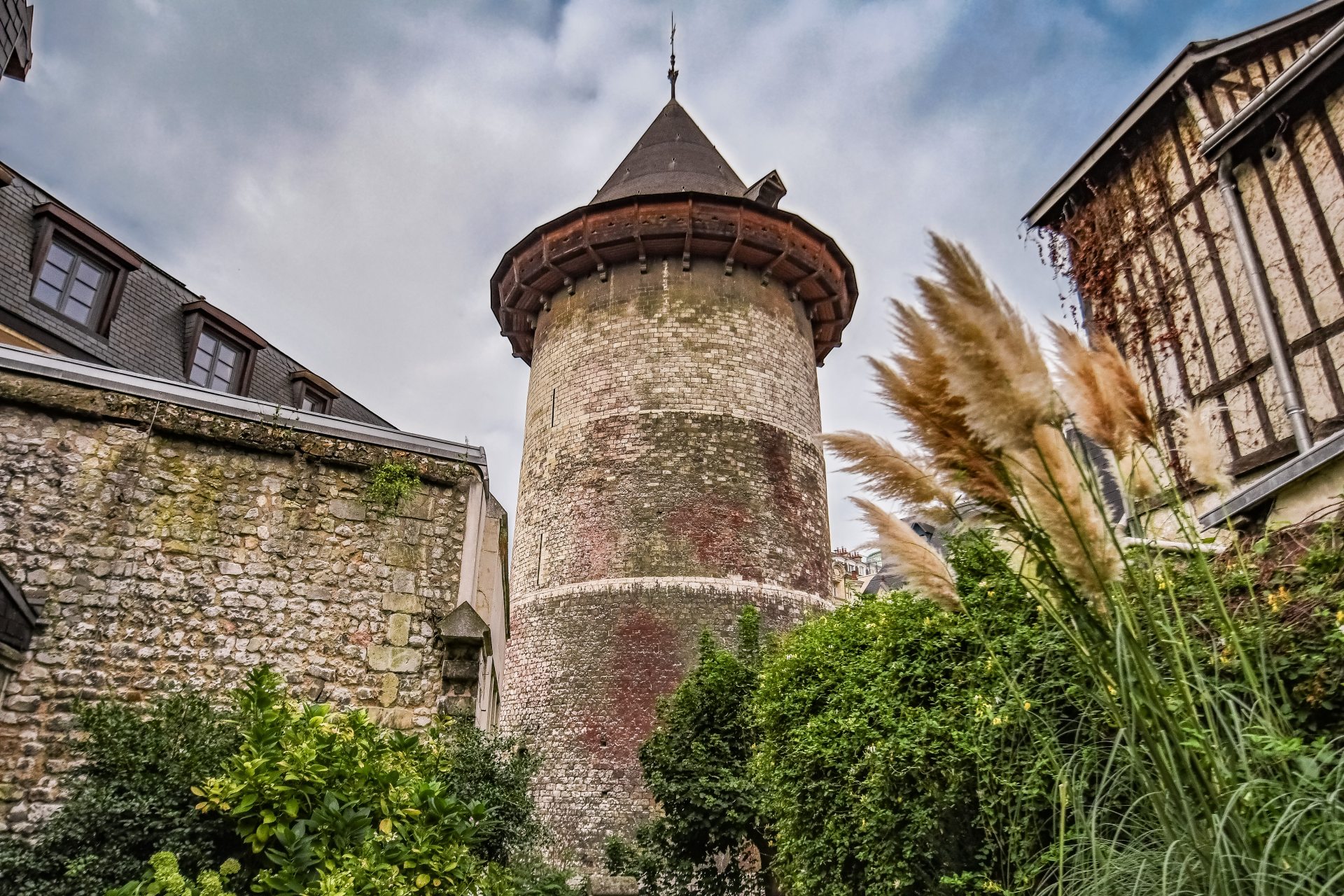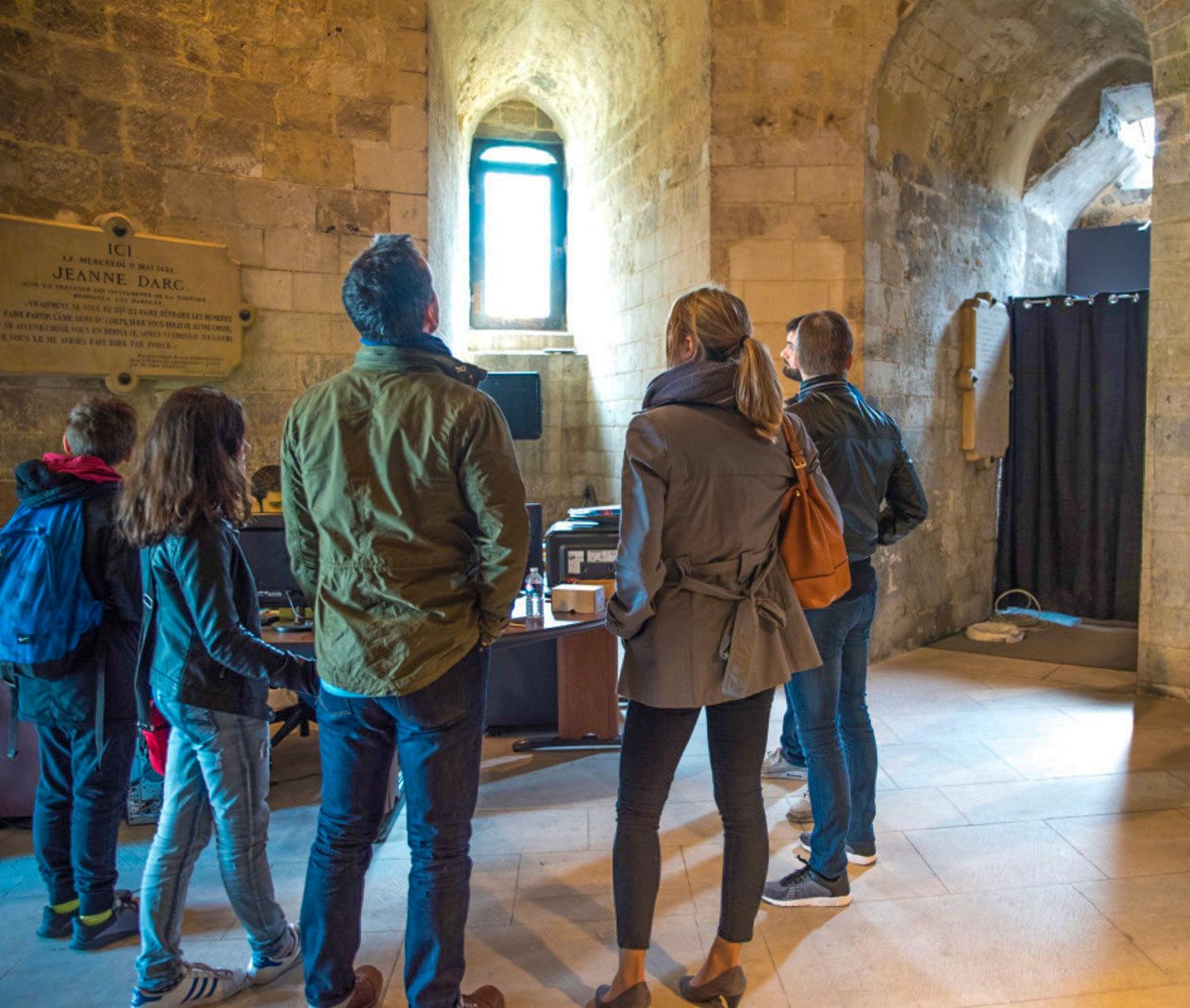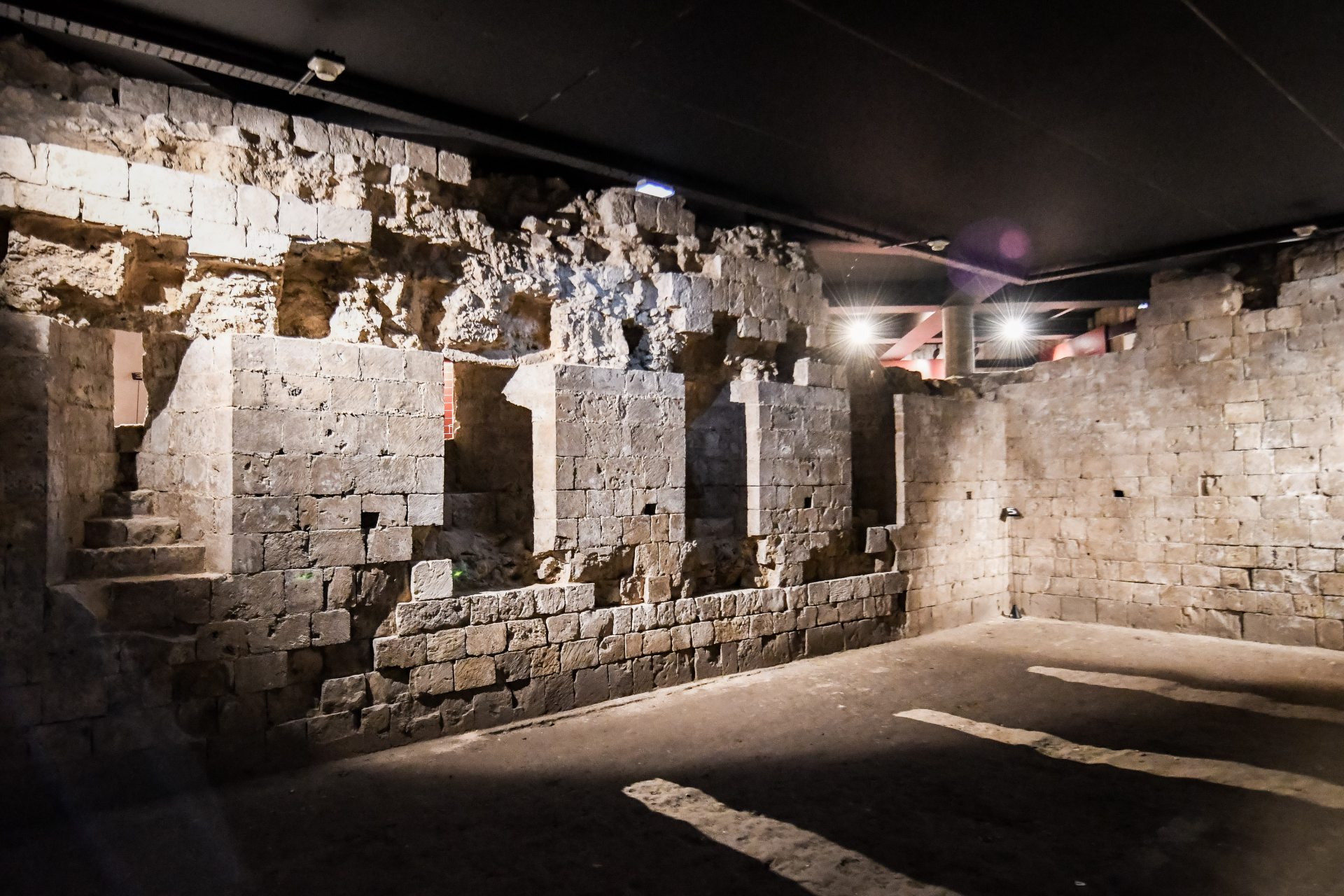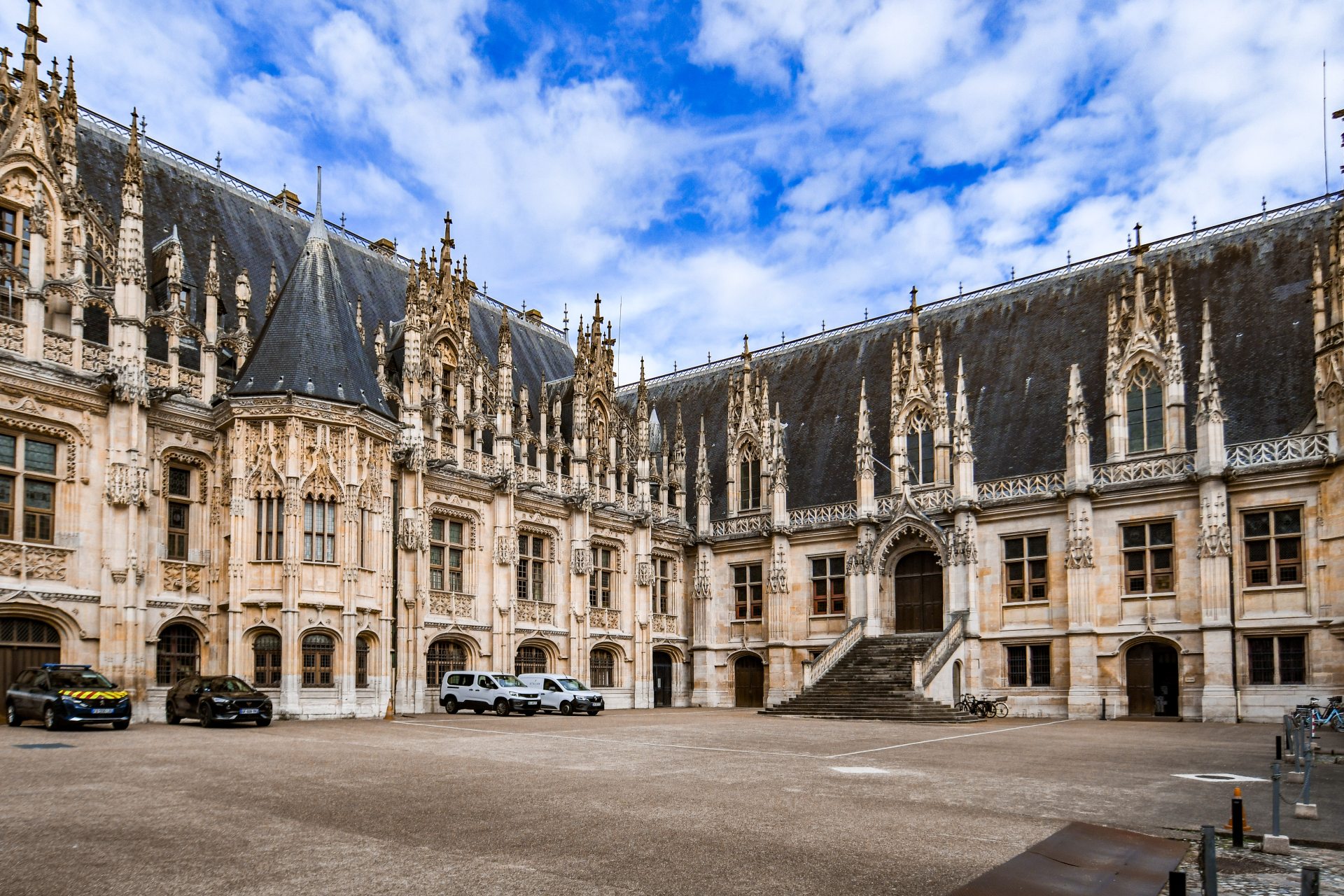J’aime mon patrimoine
Follow in the footsteps of Anne-Gaëlle Laborde-Ceyrac as she discovers “the fascinating history of this city of commerce, torn between two crowns”. In a dedicated article, the journalist from J’aime mon patrimoine looks back on her discovery of Rouen alongside our guides.
1st stop : the Donjon !
As soon as you leave the station, Rouen and its historic heritage come into view, as you turn down a nearby street and see the Donjon. This is where Anne-Gaëlle’s visit begins:
“Just imagine: 10 imposing towers, of which the keep is the largest, a polygonal enclosure and dry moats several metres high… Rouen Castle, built between 1204 and 1210 by King Philippe Auguste, looks like an impregnable fortress.”
The Historial Jeanne d’Arc and the Aître Saint-Maclou, in the heart of the historic centre, are essential places to visit when exploring Rouen.
At the heart of Joan’s trial
“After walking on the same stones as Joan of Arc at the Donjon de Rouen, discover the Historial Jeanne d’Arc, housed in the former Gothic archiepiscopal palace adjoining Rouen cathedral.
To understand everything about Joan of Arc, her history and her key role in the Hundred Years’ War, the Historial Jeanne d’Arc takes you on an immersive journey to the heart of the 15th century”.
The Aître, a local jewel
“In the 16th century, new epidemics hit Rouen and the cemetery was once again running out of space. Between 1526 and 1533, three galleries were built around the Aître Saint-Maclou to serve as ossuaries. The bones were dug up from the cemetery and placed in open-work attics for all to see. The stone columns supporting these galleries are adorned with a distinctive decoration: a danse macabre.”
The visit to the Maison Sublime was a real “coup de coeur”, arousing both interest and emotion:
The Maison Sublime
From the 13th century onwards, Jews saw their freedom of movement and trade restricted throughout France. They were forbidden to live in the countryside, prohibited from practising usury (lending at interest) and obliged to wear a distinctive sign. The restrictions multiplied until their expulsion from France was ordered by Philip the Fair in 1306.
However, the Maison Sublime seems to have survived after this event, having been destroyed around 1429 or 1550.

